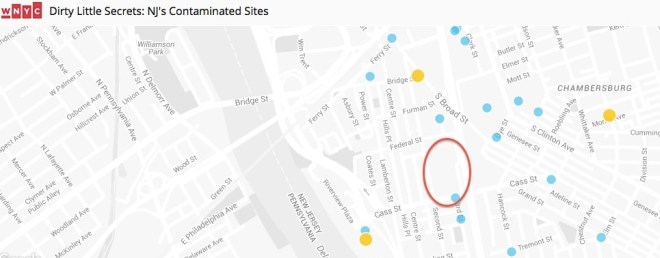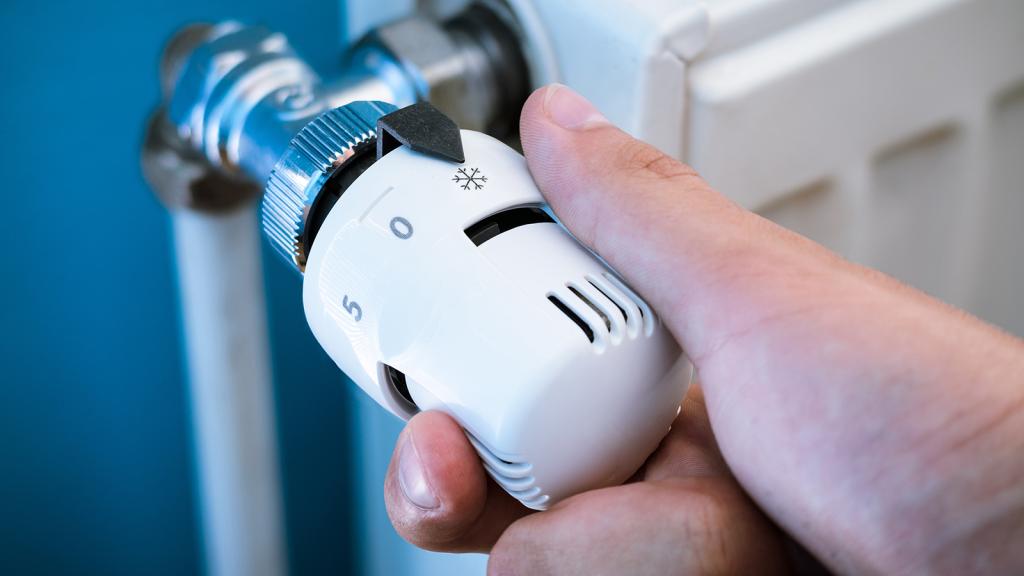We should probably just call New Jersey the Superfund State. After all, the state leads in the number of Superfund sites in the country — with a whopping 113 on the list to be cleaned up by the federal government. But it’s not just Superfund sites we should be worried about. Last week, we covered WNYC’s great investigation that looked into over 14,000 contaminated sites in New Jersey — and it included a wonderful mapping tool.
I decided to use that mapping tool to figure out how close New Jersey’s state prisons are to contaminated sites. Unfortunately, prisons in the U.S. are often located on or around toxic sites. I found the list of New Jersey state prisons on the New Jersey Department of Corrections website and used Google Maps to find most of their exact addresses. Then, I put the addresses of the prisons into the WNYC map, which populated with blue, yellow, and orange dots — each color illustrating the cleanup status of the toxic sites. (When you click on one dot, an address and information on the toxic site shows up below the map.) I then went back to Google Maps to calculate the approximate distance between the prison and the toxic site.
I expected to find at least a couple prisons within a mile of a toxic site — after all 89 percent of all New Jersey residents live within a mile of a toxic site. What I didn’t expect is that over half of New Jersey’s state prisons would be toxic sites. The WNYC map, using information from the New Jersey Department of Environmental Protection website, identifies seven out of the 13 New Jersey state prisons as toxic sites. Plus, these toxic prison sites are often surrounded by more contaminated sites.
Here are the seven prisons sitting on toxic sites:
- New Jersey State Prison: It’s the oldest prison in the state — and the one surrounded by the most toxic sites. Along with being a contaminated site itself, it also has six other contaminated sites located within a half mile — and even more within one mile. The prison opened in 1836 and houses nearly 2,000 inmates.

New Jersey State Prison (location marked by red circle) and the toxic sites surrounding it. WNYC
- Moutainview Youth Correctional Facility: This prison incarcerates about 1,000 kids and was built in 1929.
- Garden State Youth Correctional Facility: Another youth prison, opened in 1968. As of 2013, Garden State housed about 1,700 inmates. Along with being a contaminated site itself, it is also within a half mile of another contaminated site.
- Edna Mahan Correctional Facility for Women: This facility imprisons nearly 800 women and was constructed in 1913. Like Garden State, it is both a toxic site and within a half mile of another toxic site.
- Adult Diagnostic Treatment Center: This prison houses more than 600 people and was opened in 1976. It’s within a half mile of four other toxic sites.
- Albert C. Wagner Youth Correctional Facility: Another prison for kids. Built in 1934, this prison incarcerates about 1,000 young people and sits within a half mile of a toxic site.
- Central Reception and Assignment Facility/Jones Farm Minimum Security Unit: This is a processing facility that has as a unit for minimum-security inmates.
All but the Adult Diagnostic Treatment Center have hired a private contractor to facilitate the clean-up (that can take many years, according to WNYC) — which means the state is no longer responsible for the contamination.
There’s still a lot we don’t know. The New Jersey Department of Environmental Protection’s website gives little information on these contaminated sites. The information that does exist is hard to understand. Another complicating factor: Right now, we don’t know whether these sites were contaminated before the prison was built or how much the prison operations contributed to the contamination.
The lack of information is quite concerning given the number of people that could potentially be affected in the area. What toxins have been found on the site? Are they a danger to the water, land, or air? When did the site become polluted? For how long will it be polluted? When will it be cleaned up? What’s the danger to the people living and incarcerated in the area? All great questions. Maybe some day the New Jersey Department of Environmental Protection will have that information readily available to its residents.



